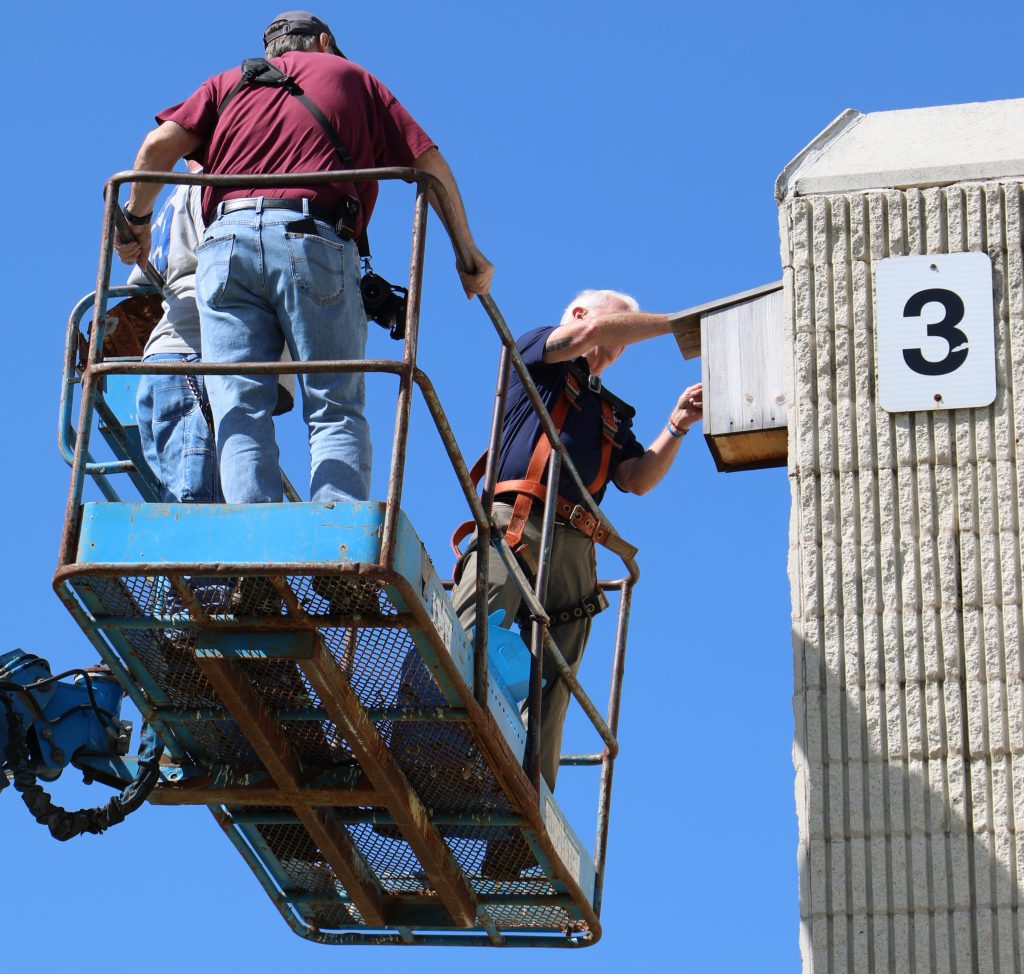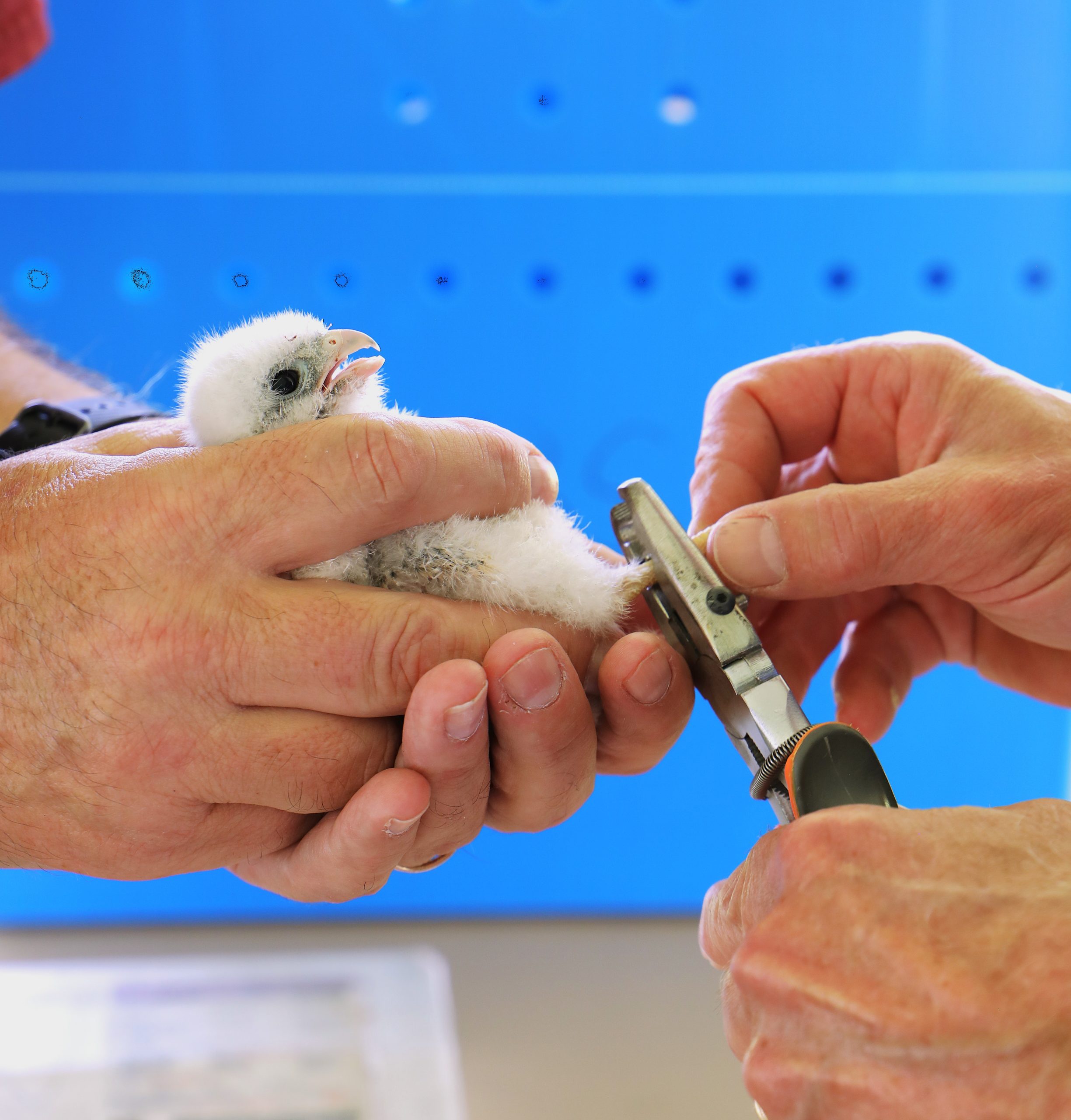
More Than a Mascot: Real Falcons Nest at ECC
At East Central College, falcons aren’t just a mascot—they’re nesting above campus.
This spring, two American Kestrel families—small but fierce members of the falcon family—nested right here on campus. Thanks to nest boxes installed on the Health and Science (HS) Building and Hansen Hall, and support from the ECC Foundation, students and viewers got a front-row seat to something special.
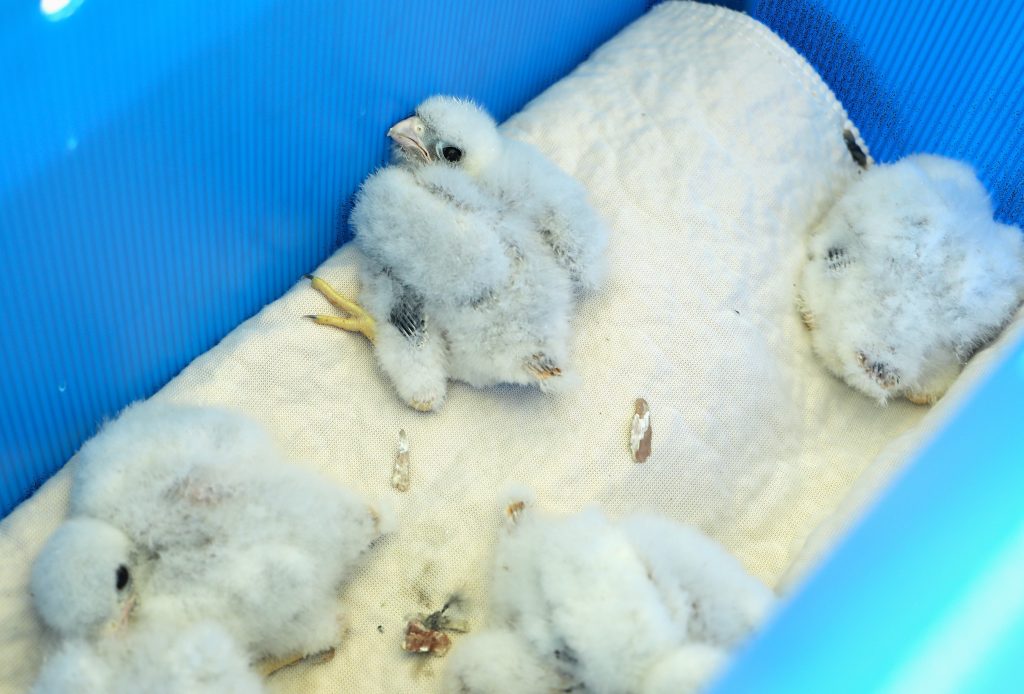
Biology Professor Kevin Dixon spearheaded the live-streamed conservation project, giving people an inside look as the nesting season unfolded.
It started off strong. By late March, eggs appeared in both boxes, and cameras showed the kestrels hard at work—taking turns incubating, switching shifts, and preparing for hatch day.
“It’s so appropriate that kestrels are using our campus,” Dixon wrote in a March update. “They’re the smallest falcons—and falcons are our mascot. Plus, kestrel populations are in decline, so we’re doing our small part to help.”
Soon, five eggs hatched in the Hansen Hall nest—tiny, down-covered chicks squirming under their mom’s wing. The parents hunted and fed constantly, even delivering a small snake one day for a Sunday meal.
Then came an unexpected turn.
The World Bird Sanctuary, Valley Park, reached out: Six orphaned chicks had been rescued during a demolition project in Kansas City. The timing was right, and ECC’s HS box became the new home for the rescued chicks.
But not every nest followed the same path. At the HS box, things took a tough turn. One by one, the eggs were lost. The female broke the first of them while shifting positions. All of the eggs eventually met the same fate.
It looked like there would be no second successful nest.
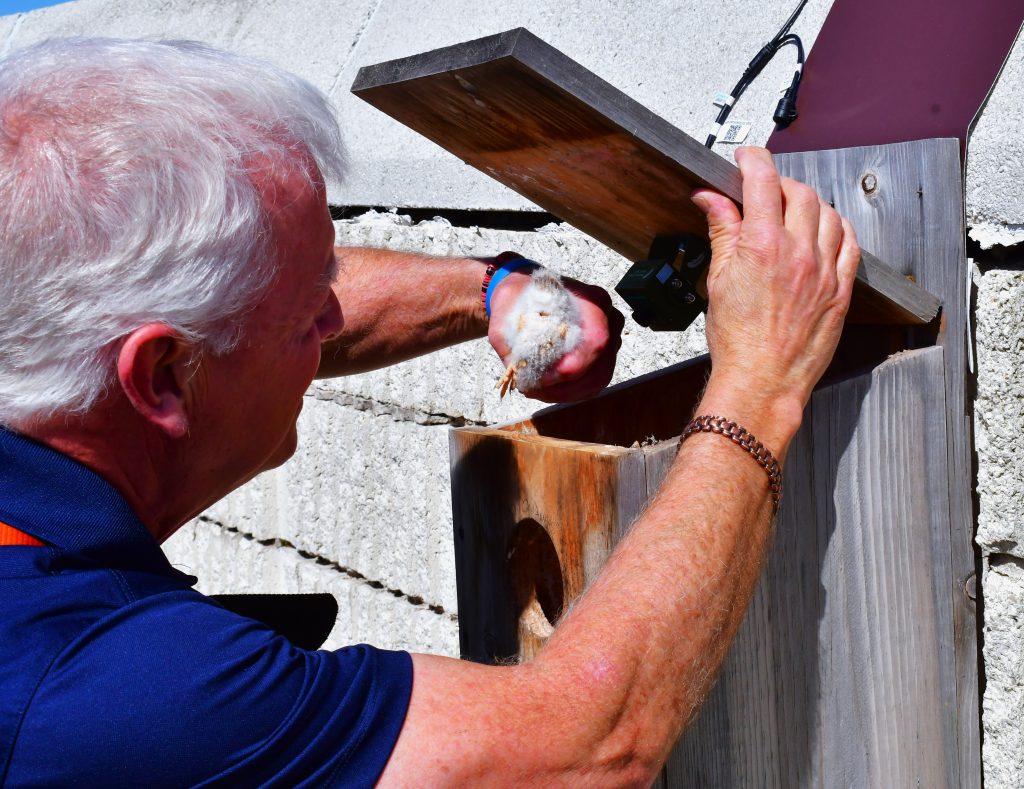
The next question: Would the kestrel parents accept the foster chicks?
“It will be a crucial 48 hours to see if the female broods them,” Dixon wrote in a campus update. “But it looks like we’ll end up with a second batch of kestrel fledglings after all.”
Within a couple of hours, the female was feeding the new arrivals like they were her own.
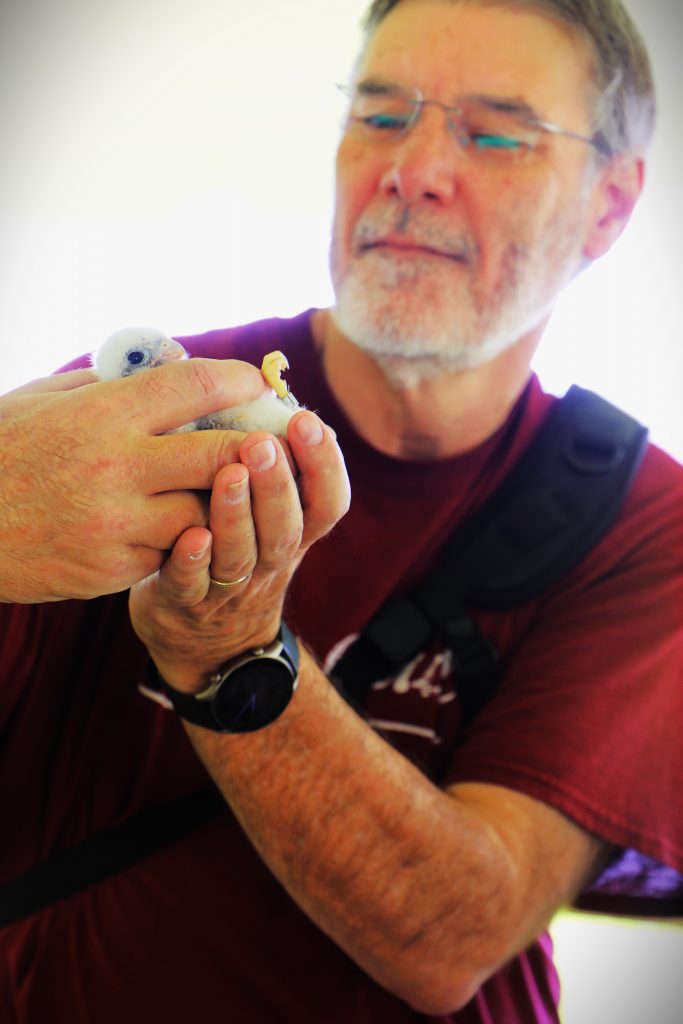
That same day, the five hatchlings in the Hansen Hall box were banded by Jeff Meshach, deputy director for the World Bird Sanctuary, and Dixon, as part of a nationwide bird tracking initiative. Banding helps researchers monitor migration, population changes, and survival rates—an important step in protecting declining species like kestrels.
The project is still live, and anyone can follow along by searching either “eccbirds” or “ECC Kestrels” on YouTube to view the live stream from both nest boxes.
The young kestrels will remain in the nest for about three to four more weeks before taking flight on their own.
ECC’s falcons—both feathered and human—are now part of something bigger.
This project came together with help from the ECC Foundation, Facilities, IT, and faculty who care deeply about science, conservation, and education. It became more than a biology experiment—it became a story of second chances.
Just as ECC graduates recently spread their wings to take flight, the young kestrels will soon follow.
And like always—they’ll be cheered on from the nest.

